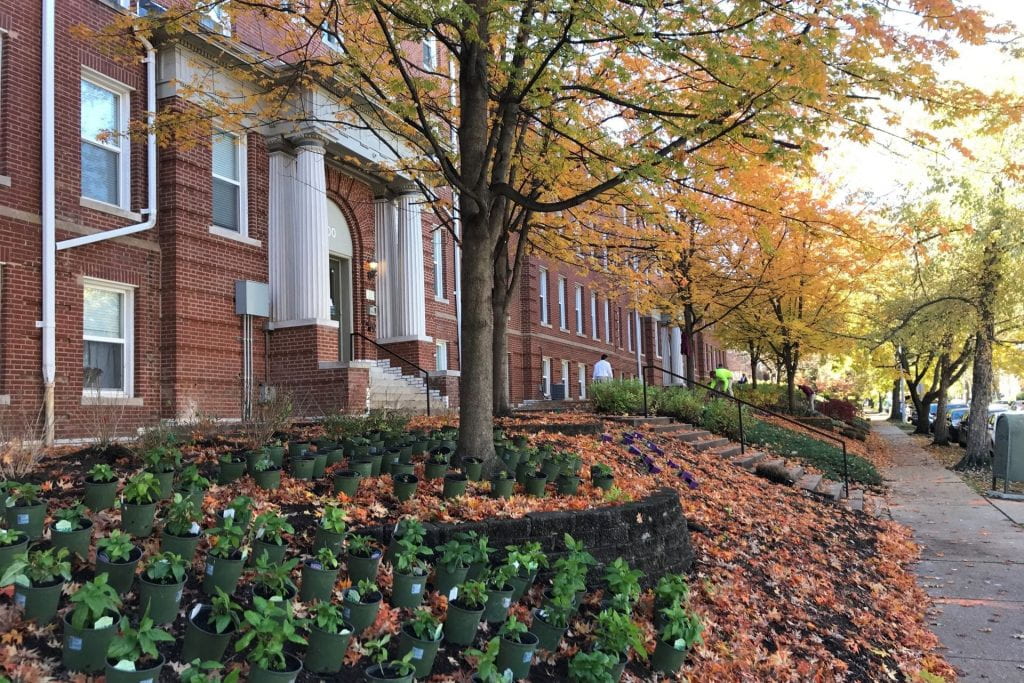Last fall, the landscape surrounding the WashU-owned Greenway Apartments was not looking too great. Vast openings of mulch was the only thing left after the decline and removal of most ornamental plants, most likely due to the maturing maple trees shading out the sun-loving plants underneath.
Witnessing this degradation, the WashU ResLife and Facilities departments approached Focal Pointe Outdoor Solutions, WashU’s landscape service provider, to re-design a landscape better suited to the local conditions. What started as a simple enhancement of the apartments’ landscape quickly turned into one of WashU’s largest native plant installation projects!
“We felt like it was a good site to do a sustainable planting with mostly native or native cultivars (nativars)”, said Cody Azotea, Account Manager for Focal Pointe. Off the 5,271 plants installed around the Greenway Apartments, over 95% are native (5,046 plants, 19 species), 3% are nativars (159 plants, 4 species) and only less than 2% are non-native ornamentals (66 plants, 2 species). Having to compose with the shadier conditions created by the many mature trees in the neighborhood, the plant material installed was mainly composed of shrubs and perennials.
The native plant installation is in the same proximity as the Centennial Greenway, a 20-mile biking and pedestrian trail that stretches throughout the St. Louis region and meanders along Melville Avenue, near the Greenway Apartments.
“The main goal of the Centennial Greenway was to aesthetically improve the corridor and increase awareness of environmental stewardship by installing native plants”, as Cody reminds us. “We felt like we could amplify this by continuing the theme of native plants down Melville and west along Washington. We used a few of the same species in pockets to unify the area and then added to the biodiversity by including more native species.”
Having this amount of native species is an incredible feat of environmental stewardship for the neighborhood. Native plants improve and support the local ecosystems and food webs, as they create habitats attractive to native species of animals. This is especially precious in an urban environment like this, where native habitat is hard to find.
A few examples include the Canadian Columbine that supports Hummingbirds; the Butterfly Milkweed that provides breeding grounds for Monarch Butterflies; the Pale Purple Cone that supports a number of pollinators as well as brings in Gold Finch when its seeds are ripe; and the Aromatic Aster, which is one of the last flowers to bloom in the fall, representing a very important late nectar source for many pollinators.
“Every year the native plant species are around, that’s more support to local ecosystem and more awareness to the community about the benefits of these plants”, says Codi.
In addition to ecological health, planting native species around the Greenway Apartments comes with operational benefits. While specialized maintenance of the native plants will be needed, the project will ultimately decrease the need of mulching and weeding, as well as reduce washout of the slope onto the Washington sidewalk.
Native plants are such an easy and efficient way to bring more life to a local ecosystem – consider them for your own backyard! The Greenway Apartment’s new landscape is an impressive addition to the area and a step forward for WashU’s natural environment. Be sure to go check out the beautiful new plants and wildlife as spring arrives and the landscape establishes!
